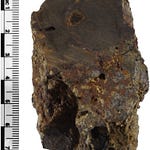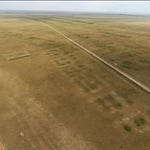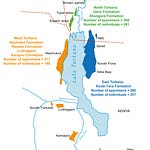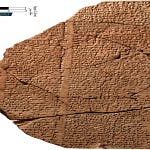In the story of human evolution, our hands often play a supporting role—literally and metaphorically. Yet what if the fingers of ancient hominins could tell us more than just when our ancestors picked up a stone tool? What if the bone beneath the surface preserved traces of not just what our relatives could do—but how they actually did it?
A new study led by Samar Syeda and colleagues, published in Science Advances digs deep—into the finger bones of two fossil hominins from South Africa—and finds that Australopithecus sediba and Homo naledi used their hands in markedly different ways. This difference, preserved in the thickness and shape of their phalangeal cortical bone, hints at evolutionary "experiments" in how to balance climbing and manipulation long before the emergence of Homo sapiens.

Internal Histories Written in Bone
To understand how ancient hominins used their hands, Syeda’s team turned to a part of the body often overlooked in paleoanthropology: the internal structure of finger bones. Specifically, they analyzed the cortical bone—dense, load-bearing tissue that thickens or thins in response to how fingers are used in life. A lifetime of grasping, manipulating, or climbing leaves an imprint in the form of bone thickness and stress patterns, particularly in the phalanges.
The study focused on two remarkable fossils: the nearly complete hand of Australopithecus sediba (MH2), dated to about 2 million years ago from Malapa, and the equally well-preserved hand of Homo naledi, dated to about 250,000 years ago from the Rising Star cave system. While previous analyses highlighted similarities in hand proportions to modern humans, this study reveals critical differences below the surface.
"The phalangeal cortical structure demonstrates diversity in Plio-Pleistocene hand use, with A. sediba and H. naledi each indicating different dexterous abilities and different climbing strategies," the authors write.
Australopithecus sediba: A Climber with a Curious Thumb
At first glance, A. sediba's hands seem to reflect a blend of human and ape features. The thumb is long and relatively human-like, and yet the overall curvature of the fingers and their internal bone structure resemble those of modern apes—especially orangutans.
Syeda and colleagues found that cortical bone in A. sediba's fingers was thickest along the palmar (grasping) side, especially near the flexor sheath ridges. This pattern closely mirrors that of tree-climbing primates and implies the fingers bore heavy loads from locomotion—particularly climbing.
But not all digits told the same story. The thumb and little finger showed patterns more consistent with human-like manipulation. Combined with the hand’s external anatomy—such as its long thumb—this suggests that A. sediba retained a capacity for grasping and manipulating objects, perhaps including early tools, while still regularly climbing.
"These two digits are more likely to reflect potential signals of manipulation because they are less often used or experience less load during climbing or suspensory locomotion," the authors note.
The fifth digit (the pinky) in particular may have played a role in tool use, a hypothesis strengthened by its internal thickening and external shape—though A. sediba has not yet been directly associated with stone tools.
Homo naledi: A Rock Climber in the Shadows?
If A. sediba walked the line between tree and tool, H. naledi seems to have invented its own playbook.
Despite living hundreds of thousands of years after A. sediba, and contemporaneously with early Homo sapiens, H. naledi retained ape-like features—especially in the curvature of its intermediate finger bones. But inside those bones lay a surprise.
Unlike any modern primate or fossil hominin yet studied, H. naledi showed a hybrid cortical pattern. The proximal finger bones had thick dorsal cortices, like those of modern humans, suggesting loads consistent with manipulation or forceful precision grips. Meanwhile, the intermediate phalanges retained thick palmar cortices and pronounced curvature, indicating continued use in climbing or heavy grasping.
"This distinct pattern was unexpected and indicates that H. naledi likely used and loaded different regions of its fingers in different ways," writes Syeda.
One hypothesis? Crimp grips. Common in modern rock climbers, this grip involves strong loading of the fingertips and requires precise coordination of flexor muscles and tendons. In H. naledi, the cortical thickness patterns resemble what’s seen in these climbing adaptations, though more research is needed to confirm whether vertical rock faces were part of this species’ daily routine.
The Nonlinear Evolution of Human Hands
The fossil hands of A. sediba and H. naledi offer a corrective to oversimplified narratives of human evolution. Rather than a straight path from climbing ape to tool-wielding human, these species exemplify different evolutionary strategies for navigating a world that required both dexterity and mobility.
"This work offers yet more evidence that human evolution is not a single, linear transition from upright walking to increasingly better tool use, but is rather characterized by different 'experiments' that balanced the need to both manipulate and to move," notes Tracy Kivell, senior author on the study.
The key innovation here is methodological. By moving beyond surface anatomy and probing the internal structure of fossil bones, researchers are better able to infer actual behavior, not just potential. These "ecophenotypic" signals—plastic traits shaped by life experience—may bridge the gap between morphology and motion.
A Final Grip
While neither A. sediba nor H. naledi has been found with tools in hand, their bones suggest they could have used them—perhaps not in the same ways, or for the same purposes, but with dexterity nonetheless. The hand, like the brain, is a canvas for behavioral evolution. And sometimes, the most telling features lie just beneath the surface.
Related Research
This study builds upon a growing body of literature focused on hand use, locomotion, and bone plasticity in hominin evolution:
Bird, E. E., et al. (2024). Trabecular bone structure of the proximal capitate in extant hominids and fossil hominins with implications for midcarpal joint loading and the dart-thrower’s motion. American Journal of Biological Anthropology, 183(2), e24824. DOI: 10.1002/ajpa.24824
Skinner, M. M., et al. (2015). Human-like hand use in Australopithecus africanus. Science, 347(6220), 395–399. DOI: 10.1126/science.1261735
Tocheri, M. W., et al. (2008). The evolutionary history of the hominin hand since the last common ancestor of Pan and Homo. Journal of Anatomy, 212(4), 544–562. DOI: 10.1111/j.1469-7580.2008.00865.x









